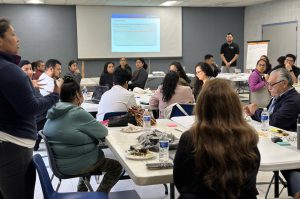
Celebrating 10 Years of SLATE-Z
Celebrating 10 Years of SLATE-Z A Legacy of Cultural Richness South Los Angeles has long been a place of cultural vibrancy, tracing its roots to
Variable Definitions:
Extremely Low Income: The percent of households whose incomes do not exceed 30 percent of the median family income for Los Angeles County
Source:
U.S. Department of Housing and Urban Development (HUD) using American Community Survey, 5-year estimates
Years Available:*
2013, 2014, 2015, 2016, 2017, 2018, 2019, 2020, 2021
*Note: Each year of available data shown above is a 5-year estimate, or an average of data collected over a five year period. 5-year estimates are used to increase the reliability of the data at small geographies like neighborhoods and census tracts. The years shown on the NDSC map represent the final year of the five year average (e.g. “2010” represents 2006-2010 data, “2011” represents 2007-2011 data, and so on). For the most impactful comparison of data over time, the ACS recommends comparing non-overlapping years (e.g. 2010-14 with 2015-19).
Household Income Groups
Household Income Groups show what percent of households are making above or below a certain income threshold, which is based on an area’s median income. Area income limits are used by the U.S. Department of Housing and Urban Development (HUD) to determine (1) which households are eligible to live in designated affordable housing units and (2) the affordability of housing units for low-income households. A housing unit is considered to be affordable if the occupants pay no more than 30% of their monthly income on housing costs.
Citation:
Metropolitan Council. AMI and Housing Affordability. March 2018. Link.

Celebrating 10 Years of SLATE-Z A Legacy of Cultural Richness South Los Angeles has long been a place of cultural vibrancy, tracing its roots to

Advancing a Collaborative Agenda in Southeast LA In 2022, the California Community Foundation (CCF) launched the Regional Recovery Hub to strengthen place-based coordination in Los Angeles County

In 2022, the California Community Foundation (CCF) launched the Regional Recovery Hub to strengthen place-based coordination in Los Angeles County regions that were most heavily impacted by
